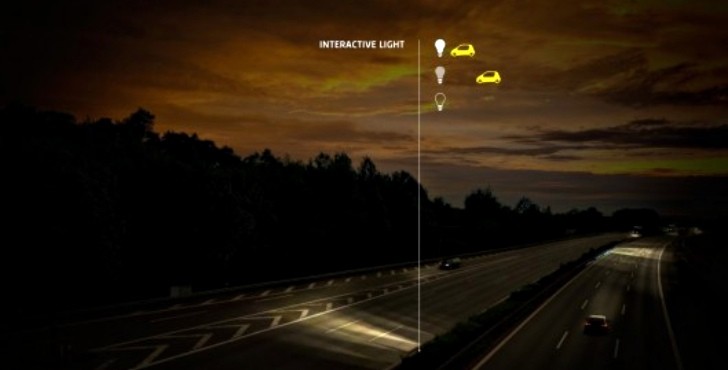We have always accepted roads for what they are - strips of tarmac or concrete, which are smooth (most of the time) and designed so that wheeled vehicles can safely travel at speed, over their surface. However, as we move forth in time, and as cars get smarter and smarter, we may need to rethink the concept of roads, as well.
Well, two Dutch design companies, called Studio Roosegraade and Heijimans Infrastructure are developing a so-called ‘Smart Highway’, which incorporates a slew of useful technologies, to make driving a safer and more interactive activity. By using an array of sensors, smart paints and energy regeneration technologies, they say it is feasible to make these new smart roads self-sufficient, in terms of the electrical energy needed to keep them operational.
The project relies on five new technologies, which are not yet available, but will become available within the next five years. The simplest of these is the “glow-in-the-dar-road”, which absorbs sunlight during the day, and illuminates road markings during the night. It can maintain the light for up to ten hours, thus reducing the risk of accidents, especially when atmospheric conditions aren’t the best - it also does away with power-consuming conventional lighting soulutions.
‘Interactive Light’ is next, and it uses sensors to detect passing vehicles and only lights up the area around the car, as it passes, then shuts off - again, a very interesting way to save power. ‘Dynamic Point’ relies on a series of special paints which are transparent under normal temperature and weather conditions, yet when things become unsafe, and the temperature drops below a certain point, warning symbols become visible on the road, so that drivers know it would be a good idea to slow down.
‘Wind Light’ is another clever concept, which uses the draught created by passing cars, to turn small pinwheels, which in turn drive small turbines, which generate electricity. The last innovative feature to be included into the concept is ‘Induction Priority Lane’, which basically allows EVs to wirelessly-charge while driving, thus reducing the strain of range anxiety on the driver’s psyche. Stay tuned, as the companies behind the project hope to have a prototype operational, in 2013. Also, this would go very well with Volvo's SARTRE program, as well as self-driving cars.
Story via gizmag.com
The project relies on five new technologies, which are not yet available, but will become available within the next five years. The simplest of these is the “glow-in-the-dar-road”, which absorbs sunlight during the day, and illuminates road markings during the night. It can maintain the light for up to ten hours, thus reducing the risk of accidents, especially when atmospheric conditions aren’t the best - it also does away with power-consuming conventional lighting soulutions.
‘Interactive Light’ is next, and it uses sensors to detect passing vehicles and only lights up the area around the car, as it passes, then shuts off - again, a very interesting way to save power. ‘Dynamic Point’ relies on a series of special paints which are transparent under normal temperature and weather conditions, yet when things become unsafe, and the temperature drops below a certain point, warning symbols become visible on the road, so that drivers know it would be a good idea to slow down.
‘Wind Light’ is another clever concept, which uses the draught created by passing cars, to turn small pinwheels, which in turn drive small turbines, which generate electricity. The last innovative feature to be included into the concept is ‘Induction Priority Lane’, which basically allows EVs to wirelessly-charge while driving, thus reducing the strain of range anxiety on the driver’s psyche. Stay tuned, as the companies behind the project hope to have a prototype operational, in 2013. Also, this would go very well with Volvo's SARTRE program, as well as self-driving cars.
Story via gizmag.com






